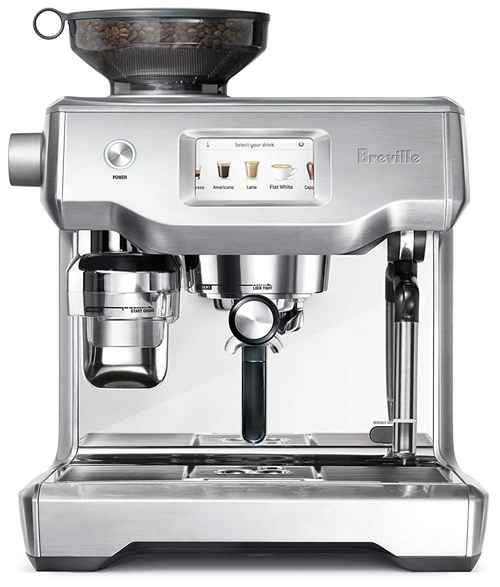Green Matcha Tea Latte Recipe [+Tips]
Note: This page contains affiliate links.
As an Amazon Associate, I earn from qualifying purchases when you click on the link, but you are not charged extra.
Okay, let’s talk matcha. If you’ve ever walked into a cozy café, spotted a jade-green drink topped with velvety foam, and thought “What on earth is that beautiful cup of green magic”? – welcome to the matcha club!
- Old World Christmas Beans: Tastes like the holidays in every cup — discover the cozy magic of Old World Christmas Beans before the season slips away.
- Kirkland Sumatra French Roast : Dark, bold, and wildly smooth—why Kirkland’s Sumatra French Roast is the best-kept secret of serious coffee drinkers.
- Hot Fudge Whole Bean Coffee : What happens when dessert meets coffee? Meet the decadent whole bean that tastes like hot fudge—but better.
- Aroma Ridge Guatemala Antigua Medium Roast : From the highlands of Guatemala to your morning mug—this rich, balanced roast is waking up coffee lovers everywhere.
- Juan Valdez Cumbre Colombian Coffee : Crafted by Colombia’s most iconic coffee legend—why Cumbre is a must-try for fans of bold, authentic flavor.
A Green Matcha Tea Latte is a harmonious blend of finely ground green tea powder (matcha), hot water, and frothy milk (dairy or plant-based – totally your call). It’s creamy. It’s comforting. It’s energizing without the jittery side effects of coffee. And yes, it’s Instagram-worthy too.
But matcha is not just about aesthetics or buzz – it’s packed with antioxidants, offers a calm yet focused energy (thanks to the amino acid L-theanine), and has roots in centuries-old Japanese tea ceremonies. We’re talking elegance, mindfulness, and health in a cup.
Now, let’s get into the how, the what, and the OMG-this-is-so-good of making your own Green Matcha Tea Latte at home.
Contents
- 1 Ingredients For Green Matcha Tea Latte Recipe
- 2 How To Make Green Matcha Tea Latte?
- 3 Expert Tips: From Good To Matcha Master
- 4 Recipe Variations: Mix It Up!
- 5 Final Words: Your Moment Of Zen
- 6 FAQs
- 6.1 What Ingredients Do I Need For A Green Matcha Tea Latte?
- 6.2 Can I Use Regular Green Tea Instead Of Matcha For A Latte?
- 6.3 How Do I Make The Matcha Powder Dissolve Properly In The Latte?
- 6.4 What Milk Is Best For A Matcha Latte?
- 6.5 Can I Make A Matcha Latte Without A Whisk Or Frother?
- 6.6 Is A Matcha Latte Healthy?
- 6.7 How Much Matcha Powder Should I Use For A Latte?
- 6.8 Can I Make A Cold Matcha Latte Instead Of Hot?
- 6.9 What Are Some Popular Variations Of A Matcha Latte?
- 6.10 How Can I Sweeten My Matcha Latte Naturally?
Ingredients For Green Matcha Tea Latte Recipe
You don’t need a ton of fancy things to make a great matcha latte. But there’s one non-negotiable: quality matcha. Trust me, it makes a world of difference.
Core Ingredients
-
1 Teaspoon Ceremonial-grade Matcha Powder
(Yes, you can use culinary grade, but ceremonial is smoother, less bitter, and perfect for lattes.)
-
2 Ounces Hot Water
(Not boiling – aim for about 175°F / 80°C to avoid bitterness.)
-
3/4 cup milk (or any milk alternative)
- Oat milk is super creamy and naturally sweet.
- Almond milk adds a nutty note.
- Whole milk brings richness.
- Soy milk foams beautifully.
-
1-2 Teaspoons Sweetener (optional)
- Honey
- Maple syrup
- Agave nectar
- Vanilla syrup
- Or a sugar-free option like stevia or monk fruit
-
Pinch Of Cinnamon Or Vanilla Extract (optional)
(For those cozy vibes.)
How To Make Green Matcha Tea Latte?
Making a matcha latte at home can be a soothing ritual if you let it be. You don’t have to rush it. Treat it like a little mindful moment for yourself. Here’s how:
☕ Step-by-Step Guide
-
Sift Your Matcha
- Use a fine mesh strainer to sift your matcha powder into a bowl or mug.
- Why? It prevents clumping and ensures a smooth, lump-free drink.
- Think of this as dusting fairy dust – it’s oddly satisfying.
-
Add Hot Water & Whisk
- Pour in your hot (not boiling!) water.
- Use a bamboo matcha whisk (chasen) or a small electric frother.
- Whisk in a zigzag (M or W) motion until the matcha is fully dissolved and a light froth appears.
- No whisk? Use a milk frother, handheld electric whisk, or even a blender!
-
Heat & Froth Your Milk
- Gently heat your milk on the stovetop or microwave.
- Froth it using a frother, a French press (just pump it up and down), or a whisk.
- The goal? Warm, airy, velvety milk.
-
Sweeten The Deal
- Add your sweetener of choice to the matcha base. Stir well.
-
Assemble & Serve
- Pour the frothed milk into the matcha mixture.
- Gently swirl or stir, and top with extra foam.
- Dust with a little matcha or cinnamon if you’re feeling fancy.
Expert Tips: From Good To Matcha Master
Want your matcha latte to taste like it came from your favorite café (or better)? Keep these in mind:
-
Use Ceremonial-grade Matcha For Lattes.
It’s smoother, brighter, and less bitter than culinary-grade matcha. Worth the splurge.
-
Don’t Use Boiling Water.
Boiling water scorches the matcha, making it taste bitter and grassy. 175°F (or slightly below boiling) is the sweet spot.
-
Whisk Like You Mean It.
A traditional bamboo whisk gives the best frothy results. And it just feels cool to use.
-
Experiment With Milk.
Not all plant milks froth the same. Oat milk tends to win for creaminess and foam.
-
Drink It Fresh.
Matcha oxidizes quickly – the vibrant green fades and flavors dull. Sip ASAP for the best experience.
-
Store Matcha Properly.
Keep it in an airtight container, in a cool, dark place – preferably the fridge.
Recipe Variations: Mix It Up!
Let’s shake things up a bit, shall we? Here are some delicious spins on the classic:
-
Iced Matcha Latte
- Skip heating the milk and water. Mix matcha with cold water, add ice, pour cold milk on top.
-
Vanilla Matcha Latte
- Add 1/2 tsp pure vanilla extract or a splash of vanilla syrup for a subtly sweet depth.
-
Matcha Coconut Latte
- Use coconut milk for a tropical twist – creamy and slightly sweet.
-
Dirty Matcha Latte
- Add a shot of espresso if you want that matcha-coffee hybrid kick. Earthy + bold = perfection.
-
Spiced Chai Matcha Latte
- Mix in a bit of chai spice blend or brew chai tea and blend it with matcha for a warm, aromatic fusion.
-
Matcha Protein Latte
- Add a scoop of vanilla or unflavored protein powder for a post-workout green fuel-up.
Final Words: Your Moment Of Zen
Here’s the thing: a Green Matcha Tea Latte isn’t just a drink – it’s an experience. A ritual. A tiny act of self-care in a noisy world. Whether you sip it while journaling, prepping for a workday, or curled up with a book, you’re indulging in something ancient yet timeless.
And once you get the hang of it, it’s just so easy. You can whip one up in under five minutes and instantly feel a little calmer, a little more focused, and a whole lot happier.
FAQs
What Ingredients Do I Need For A Green Matcha Tea Latte?
To make a green matcha tea latte, you will need matcha powder, milk (dairy or non-dairy like almond, oat, or soy milk), sweetener (like honey, maple syrup, or sugar), and hot water. Optional ingredients include vanilla extract, cinnamon, or a pinch of salt for added flavor.
Can I Use Regular Green Tea Instead Of Matcha For A Latte?
No, matcha and regular green tea are different. Matcha is made from powdered green tea leaves, offering a more intense flavor and higher caffeine content compared to regular green tea. For an authentic matcha latte, matcha powder is essential.
How Do I Make The Matcha Powder Dissolve Properly In The Latte?
To ensure the matcha powder dissolves fully, whisk it with a small amount of hot water before adding milk. Use a bamboo whisk (chasen) or a frother to help break up clumps. Make sure the water is not boiling-around 175°F (80°C) is ideal.
What Milk Is Best For A Matcha Latte?
The best milk for a matcha latte depends on your personal preference. Traditionalists use whole milk for a creamy texture, but non-dairy options like oat, almond, or coconut milk also work well. Oat milk is often favored for its creamy consistency.
Can I Make A Matcha Latte Without A Whisk Or Frother?
Yes, if you don’t have a whisk or frother, you can use a small blender or a handheld milk frother to mix the matcha powder and water. Alternatively, vigorously stir the matcha and hot water in a bowl with a spoon to break up the clumps.
Is A Matcha Latte Healthy?
Yes, a matcha latte can be a healthy beverage. Matcha is rich in antioxidants, boosts metabolism, and provides a calm, sustained energy boost due to its unique combination of caffeine and L-theanine. However, the healthiness also depends on the type of sweetener and milk you use.
How Much Matcha Powder Should I Use For A Latte?
Typically, for one serving of matcha latte, you should use 1 to 2 teaspoons (about 2 to 4 grams) of matcha powder. Adjust the amount based on your desired strength and flavor intensity.
Can I Make A Cold Matcha Latte Instead Of Hot?
Yes, to make a cold matcha latte, simply whisk the matcha powder into a small amount of cold water, then add ice and pour in your choice of milk. You can also blend it with ice for a frothy, refreshing iced version.
What Are Some Popular Variations Of A Matcha Latte?
Popular variations include adding vanilla syrup for sweetness, incorporating spices like cinnamon or cardamom for flavor, or even blending the latte with coconut milk for a tropical twist. Some people also enjoy adding a scoop of protein powder for an extra nutritional boost.
How Can I Sweeten My Matcha Latte Naturally?
You can sweeten your matcha latte naturally using honey, maple syrup, agave nectar, or stevia. Start with a small amount and adjust according to your taste preferences. Additionally, some people use dates or coconut sugar for a more natural, lower glycemic index option.

